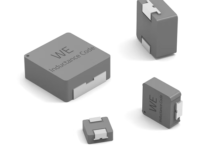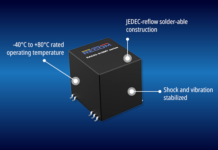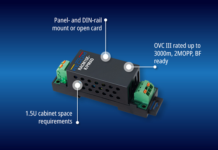
Automotive camera modules tend to be size-constrained, so designers are constantly in search of a power management solution that can pack the necessary power and functionality into a small form factor. The 4-channel MAX20049 power management IC is almost 30 percent more compact than competitive solutions and offers the highest efficiency among other quad-power power management ICs in its class.
It offers many options to support modules that need various output voltages for different mixes of sensors and serializers, enabling designers to make changes in layout as needed or to fine-tune the IC to meet specific application requirements. The MAX20049 provides fault mitigation, a feature required by designers to help flag faults and shifts in output voltages to ensure that the cameras are working as needed.
Key Advantages
- Smallest Solution Size: has a PCB footprint that is almost 30 percent smaller than that of the closest competitor (38mm2 compared to 53.3mm2)
- 4 outputs (dual bucks and dual LDOs) in a 3mm x 3mm QFN package
- Protection unavailable in competitive products include over-voltage protection, under-voltage lockout, external power good (PGOOD) signal and cycle-by-cycle current limit
- Highest Efficiency: system efficiency at full load is 74 percent (versus 69 percent for discrete automotive solutions)
- Thermal performance plus high efficiency contributes to overall optimized performance
- Flexibility: the dual buck converters and low-noise LDO support a wide voltage input range from 4V to 17V, enabling power-over-coax (POC), typically from 8V to 10V. There is also an option of using one of the buck converters as an intermediate supply for generating typical sensor + serializer rails
- Optimizes thermal performance and minimizes coax inrush current at startup
- Flexible sequencing and fixed output voltages supporting various image sensors
- Fault Mitigation: flags faults and shifts in output voltages to ensure cameras are working as intended
- Once an over- or under-voltage signal is detected, the PGOOD pin will assert low
- Cycle-by-cycle current limit implemented by the respective converter if either output is shorted
- Low Noise: spread spectrum and 2.2MHz switching frequency mitigates electromagnetic interference (EMI) to meet CISPR low-noise specifications
Availability and Pricing:- The MAX20049 is available at Maxim’s website; Pricing available upon request


















